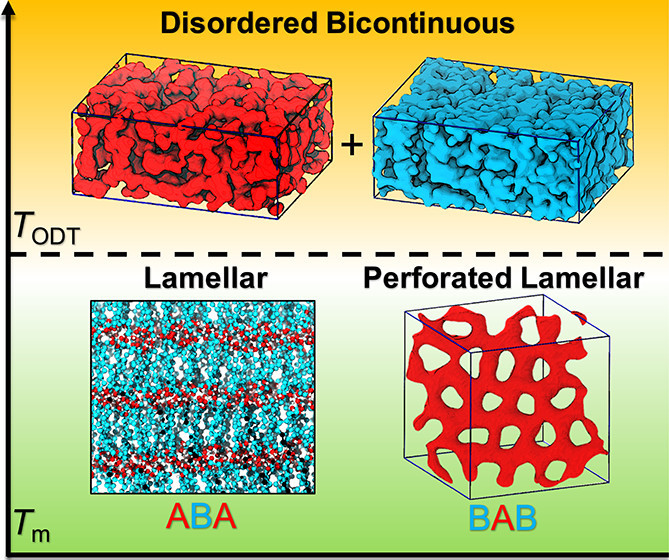J. Am. Chem. Soc. 142, 9352–9362 (2020)
Using molecular dynamics simulations and transferable force fields, we designed a series of symmetric triblock amphiphiles (or high-χ block oligomers) comprising incompatible sugar-based (A) and hydrocarbon (B) blocks that can self-assemble into ordered nanostructures with sub-1 nm domains and full domain pitches as small as 1.2 nm. Depending on the chain length and block sequence, the ordered morphologies include lamellae, perforated lamellae, and hexagonally perforated lamellae. The self-assembly of these amphiphiles bears some similarities, but also some differences, to those formed by symmetric triblock polymers. In lamellae formed by ABA amphiphiles, the fraction of B blocks “bridging” adjacent polar domains is nearly unity, much higher than that found for symmetric triblock polymers, and the bridging molecules adopt elongated conformations. In contrast, “looping” conformations are prevalent for A blocks of BAB amphiphiles. Above the order–disorder transition temperature, the disordered states are locally well-segregated yet the B blocks of ABA amphiphiles are significantly less stretched than in the lamellar phases. Analysis of both hydrogen-bonded and nonpolar clusters reveals the bicontinuous nature of these network phases. This simulation study furnishes detailed insights into structure–property relationships for mesophase formation on the 1 nm length scale that will aid further miniaturization for numerous applications.
